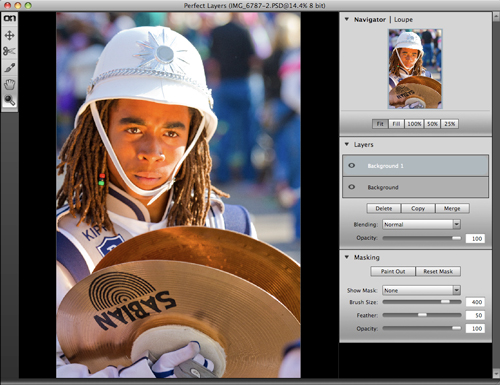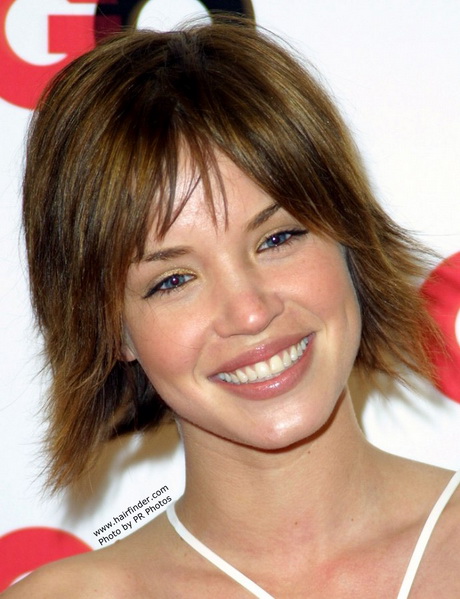
Press the letter “d” to set your Foreground color to black, then press the letter “b” to switch to the brush tool. In the Layers panel, click on the original bottle layer to make it active, then hold the Command key (PC: Control key) and click on the Create a New Layer icon to create a new blank layer under the Nail Polish Bottles layer. Now we’re going to create a shadow for the nail polish bottles. This helps put the focus on the real bottles and not on the reflection. When the dialog appears, enter 90º for Angle and 20 pixels for Distance, and click OK to apply a bit of motion bur to the reflection. Go under the Filter menu and, under Blur, choose Motion Blur. To make this mirror-like reflection look more realistic, go to the Layers panel and lower the Opacity of the flipped layer to 20%, as shown here. Hit Enter (PC: Return) to lock in this transformation. Next, go to the Edit menu and choose Transform>Warp, and noodle (that’s a technical term) with the area using small tugs and pushes until the gap is eliminated, taking care to keep the shape similar to the original shape. The reflection won’t really show detail, so it doesn’t need to be a super-perfect selection. Zoom in and make a selection around the part of the reflection that needs to be nudged up.

To do that, simply right-click (or Control-click) directly on the reflection layer (“Nail Polish Bottles copy”) in the Layers panel, bringing up a contextual menu, and select Rasterize Layer, as shown below. Since our image and reflection layers were placed as Smart Objects, the first thing we need to do to fix the little gap on the right is to rasterize the Smart Object. In this particular image, the bottles don’t align completely, so we’ll have to make a couple of adjustments that are not usually required for this technique. In the Layers panel, drag your flipped reflection layer below your original image layer. Keep dragging straight down until the bottoms of the nail polish bottles meet. Now, using the Move tool, hold the Shift key and click on the flipped image, and drag straight down (the Shift key will keep the flipped bottles in the same horizontal position as you drag). Choose Flip Vertical (as shown here), then press Return (PC: Enter) to lock in your transformation. When the Free Transform bounding box appears, Control-click within the bounding box and a contextual menu will appear. Then, press Command-T (PC: Control-T) to bring up the Free Transform command. To create the reflection, start by pressing Command-J (PC: Control-J) to duplicate the image layer. Here, you’ll see the nail polish bottles have been left as a Smart Object, which is good practice when sizing images down. Make sue your object is on its own layer (silhouetted on a transparent background). Open and place the image you want to add a reflection to. Click about one-third from the top in the center of your document and drag straight down to the bottom of the document to add a slight gradient to Layer 1. Click the linear Gradient icon in the Options Bar. Choose the very first gradient (the Foreground to Background gradient) in the Picker. Then click on the background color swatch and choose a light to middle grey.

Open a new document (File>New) using the “Web Minimum” preset of 1024×768 pixels at 72 ppi.Ĭlick on the Foreground color swatch in the Toolbox and choose a very light, almost white, gray color.

Here’s an Old School technique that is still extremely useful today, inspired by Scott Kelby’s 2004 book, Photoshop Classic Effects: The Essential Effects Every User Needs to Know, and updated for Photoshop CC 2017.


 0 kommentar(er)
0 kommentar(er)
